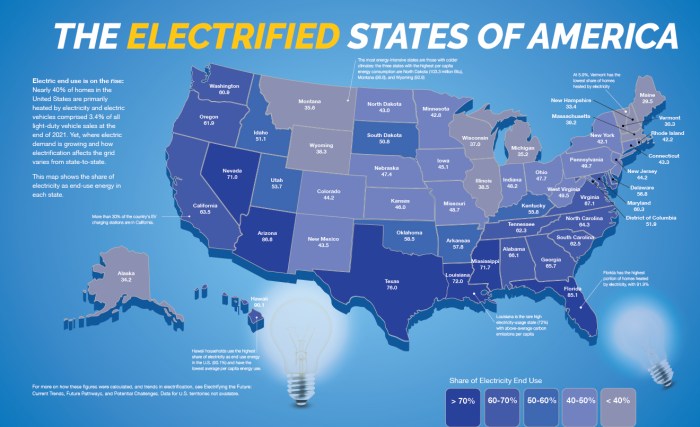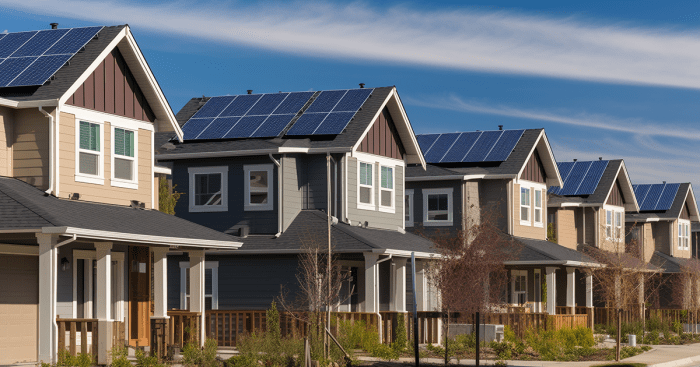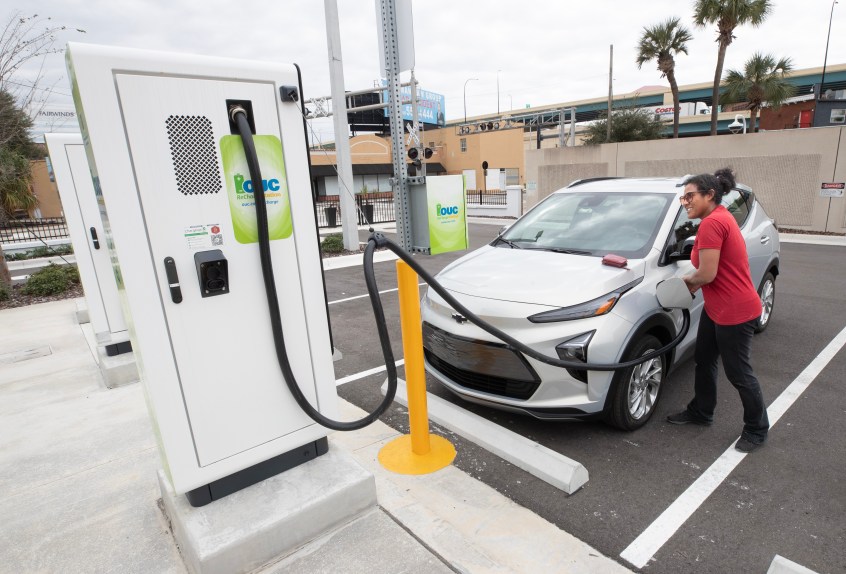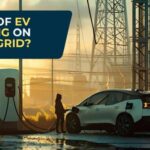Cheapest electricity rates for EVs in Florida? Yeah, that’s a big deal, especially with gas prices doing their own thing. This isn’t just about saving a few bucks; it’s about finding the sweet spot where you can power your electric vehicle without breaking the bank. We’re diving deep into Florida’s electricity market – from understanding those confusing rate structures to exploring sneaky ways to lower your bill, like off-peak charging and even solar power.
Get ready to electrify your savings!
Florida’s electricity market is a bit of a maze, with various providers and rate plans. We’ll break down the different types of providers, the regulatory stuff (don’t worry, we’ll keep it simple!), and the various rate structures offered. Then, we’ll zero in on Time-of-Use (TOU) rates, which often offer lower prices for charging your EV overnight. We’ll compare different TOU plans, calculate how much you could save, and explore options like renewable energy and community solar programs.
Think of it as your ultimate guide to scoring the lowest electricity rates for your EV in the Sunshine State.
Understanding Florida’s Electricity Market Structure

Florida’s electricity market is a complex system involving various players and regulations, significantly impacting the cost of electricity, including EV charging. Understanding this structure is crucial for consumers seeking the cheapest rates. This section will detail the key components of this system.
The state’s electricity market is largely characterized by a mix of investor-owned utilities (IOUs), municipal utilities, and electric cooperatives. These entities differ in their ownership structure, rate-setting mechanisms, and service areas, leading to a diverse landscape of electricity prices across the state.
Florida’s Electricity Providers
Florida’s electricity landscape is composed of three primary types of providers, each with its own operational characteristics and regulatory oversight. These differences directly affect the rates consumers pay.
- Investor-Owned Utilities (IOUs): These are for-profit companies like Florida Power & Light (FPL), Duke Energy Florida, and Tampa Electric. They are regulated by the Florida Public Service Commission (PSC) which sets their allowed return on investment and approves their rate increases.
- Municipal Utilities: These are publicly owned utilities operated by cities or towns. They are often subject to local oversight and may have different rate-setting processes than IOUs. They might offer more competitive rates in certain instances due to different cost structures and priorities.
- Electric Cooperatives: These are non-profit organizations owned and operated by their members (customers). They are regulated by the PSC but often have a greater focus on serving rural areas, potentially influencing their rate structures.
Regulatory Framework Governing Electricity Rates
The Florida Public Service Commission (PSC) plays a central role in regulating electricity rates. Their primary function is to ensure that rates are just and reasonable for consumers while allowing utilities to recover their costs and earn a fair return on investment.
The PSC reviews and approves rate increases proposed by utilities. This process involves extensive analysis of the utility’s costs, revenue requirements, and proposed rate designs. Public hearings and interventions are common parts of this process, allowing consumers and other stakeholders to voice their opinions. The PSC’s decisions are subject to judicial review.
Electricity Rate Structures Offered by Utility Companies
Florida’s utility companies offer various rate structures designed to meet the diverse needs of their customers. These structures often incorporate time-of-use (TOU) pricing, demand charges, and other components.
- Time-of-Use (TOU) Rates: These rates vary depending on the time of day and/or day of the week electricity is consumed. They typically offer lower rates during off-peak hours and higher rates during peak demand periods. This incentivizes customers to shift their electricity consumption to off-peak times, potentially reducing their overall costs. Many EV owners find TOU rates advantageous because they can schedule charging during off-peak hours.
- Demand Charges: These charges are based on the highest level of electricity demand a customer experiences during a billing period. They are often relevant for large consumers, including those with significant EV charging needs. Managing peak demand can significantly impact the overall cost.
- Flat Rates: These are simpler, fixed rates where the price per kilowatt-hour (kWh) remains constant regardless of the time of day or demand. While straightforward, they may not be as cost-effective as TOU rates for EV owners who can strategically schedule charging.
Identifying Time-of-Use (TOU) Rates for EVs
Time-of-Use (TOU) electricity rates offer a potentially significant way to reduce the cost of charging an electric vehicle (EV) in Florida. These plans incentivize charging during off-peak hours, typically overnight, when electricity demand is lower and generation costs are cheaper. Understanding the specifics of these plans is crucial for maximizing savings.Understanding the various TOU rate plans available from Florida’s utility companies requires careful comparison.
Different utilities offer different structures, and even within a single utility, multiple plans may exist, each with its own pricing tiers and off-peak periods. This can lead to a complex landscape for consumers trying to find the best option.
Comparison of Time-of-Use Rate Plans
Several factors differentiate TOU rate plans. These include the length of the off-peak period, the difference between on-peak and off-peak rates, and the specific times of day that constitute on-peak and off-peak hours. For example, one plan might offer a substantial discount for charging between midnight and 5 a.m., while another might have a shorter off-peak window with a smaller rate reduction.
Some plans may also include tiered pricing within on-peak and off-peak hours, adding further complexity. It is important to carefully review the specific details of each plan offered by your utility provider.
Examples of TOU Rates Favoring Nighttime Charging
Many Florida TOU plans are structured to encourage nighttime charging. For instance, a hypothetical plan might offer an off-peak rate of $0.08 per kilowatt-hour (kWh) between 11 p.m. and 7 a.m., compared to an on-peak rate of $0.20/kWh during the day. This represents a significant cost savings for EV owners who can shift their charging to overnight hours. This example illustrates how a significant price difference incentivizes charging during off-peak periods.
Another example could be a plan with an off-peak rate of $0.10/kWh from 10 p.m. to 6 a.m., and an on-peak rate of $0.18/kWh during peak hours. The specific numbers will vary based on the utility and the plan.
Time-of-Use Rates by Utility and Service Area
The following table provides examples of TOU rates offered by some Florida utility companies. Note that these rates are subject to change and may not represent all plans offered. It’s crucial to check directly with your utility provider for the most up-to-date information. This data is for illustrative purposes only and should not be considered exhaustive or definitive.
| Utility | Rate Plan Name | Off-Peak Rate ($/kWh) | On-Peak Rate ($/kWh) |
|---|---|---|---|
| Florida Power & Light (FPL) | Example TOU Plan A | 0.09 | 0.22 |
| Duke Energy Florida | Example TOU Plan B | 0.10 | 0.17 |
| Tampa Electric Company | Example TOU Plan C | 0.08 | 0.20 |
| Gulf Power Company | Example TOU Plan D | 0.11 | 0.19 |
Analyzing the Impact of EV Charging on Electricity Bills
So, you’ve got your shiny new EV and are ready to hit the road. But how will all that charging affect your electricity bill? Let’s break down the impact of EV charging on your wallet, considering various factors like charging times and electricity rates. Understanding this will help you budget effectively and potentially save money.EVs typically consume a significant amount of electricity when charging, especially if you’re using a Level 2 charger (240V) which is much faster than a Level 1 charger (120V).
The actual amount depends on several factors, including the battery size of your EV, its charging efficiency, and the charging rate. A larger battery will naturally take more electricity to fully charge, while a higher charging rate will use more power in a shorter time.
Electricity Consumption During EV Charging
The average EV battery size is around 60 kWh (kilowatt-hours), although this can vary considerably depending on the model and year. Charging from completely empty to full takes approximately 60 kWh of electricity (ignoring minor losses during the charging process). This means that a full charge will cost you approximately 60 kWh multiplied by your electricity rate per kWh.
For example, if your electricity rate is $0.15/kWh, a full charge would cost you around $9.00. However, most people don’t let their batteries fully deplete, so the actual cost per charge will be lower in most cases.
Electricity Cost Calculations for Different Charging Scenarios
Let’s look at some examples. Assume an electricity rate of $0.15/kWh and a 60 kWh battery.
| Charging Scenario | Charging Time | kWh Used (estimated) | Cost (at $0.15/kWh) |
|---|---|---|---|
| Overnight (Level 2) | 8 hours | 60 kWh | $9.00 |
| Daytime (Level 2, peak hours) | 8 hours | 60 kWh | $9.00 (potentially higher with peak rates) |
| Daytime (Level 1) | 24+ hours | 60 kWh | $9.00 (potentially higher with peak rates) |
Note: Daytime charging during peak hours may incur higher costs due to time-of-use (TOU) rates, which are often higher during periods of high electricity demand. This is why overnight charging is generally more cost-effective.
Impact of Different Charging Habits on Electricity Expenses
Your charging habits significantly influence your electricity bill. Charging overnight during off-peak hours, when electricity rates are typically lower, can save you money compared to charging during the day. Similarly, utilizing features like pre-conditioning, which heats or cools the car before you get in, can add to your electricity consumption but may enhance comfort and offset any extra cost.
Also, consistently charging to 80% instead of 100% can prolong battery life and reduce electricity consumption. Using smart charging technologies can further optimize your charging schedule based on electricity prices and your personal preferences. These technologies allow you to charge your EV when electricity rates are lowest.
Exploring Renewable Energy Options for EV Charging: Cheapest Electricity Rates For EVs In Florida
Going green with your EV doesn’t just mean reducing emissions from driving; it also extends to how you power your vehicle. Choosing renewable energy sources for EV charging offers environmental benefits and can potentially lead to significant cost savings in the long run, especially considering Florida’s abundant sunshine. This section explores the viability of solar power for EV charging and the incentives available to make it a more accessible option.Solar power offers a compelling alternative to grid electricity for EV charging in Florida.
The state’s high solar irradiance means solar panels can generate a substantial amount of electricity, potentially offsetting a significant portion, or even all, of your EV’s charging needs. This translates directly into lower electricity bills and a smaller carbon footprint. However, the initial investment in a solar panel system can be substantial, and the return on investment depends on factors like system size, energy consumption, and available incentives.
Solar Power Availability and Cost Savings
The feasibility of solar power for EV charging depends on several factors, including roof space, sunlight exposure, and energy consumption. A typical household EV might consume 30-50 kWh per day, depending on driving habits and vehicle efficiency. A well-designed solar panel system can generate enough electricity to cover a significant portion of this consumption, potentially eliminating or significantly reducing your reliance on the grid.
The exact cost savings will vary based on your electricity rates, the size of your solar system, and the amount of energy it generates. For example, a homeowner in South Florida with high electricity rates might see a substantial return on investment within five to seven years, while someone in a northern part of the state with lower rates and less sunlight might see a longer payback period.
The initial investment can be offset by federal and state tax credits, rebates, and other incentives.
Programs and Incentives for Renewable Energy Adoption
Several federal and state programs incentivize the adoption of renewable energy, including solar power for EV charging. The federal Investment Tax Credit (ITC) offers a significant tax credit for homeowners who install solar panels. Florida also offers various utility company rebates and programs designed to promote solar energy adoption. These programs often include upfront discounts on solar panel installations or reduced electricity rates for customers who generate their own renewable energy.
Additionally, some local municipalities offer additional incentives, further reducing the upfront cost of solar. It’s crucial for EV owners to research the available programs in their specific area to maximize their savings.
Finding the cheapest electricity rates for EVs in Florida is key to saving money, especially since home charging is often the most convenient option. But what if you live in an apartment? Luckily, there are options like the grants available for apartment EV charging infrastructure, check out this link for more info on EV charging grants for apartments 2025 , which could help offset installation costs.
Ultimately, combining cheap electricity rates with grant funding can make going electric in Florida much more affordable.
Comparison of Solar vs. Grid Electricity for EV Charging
| Feature | Solar Power | Grid Electricity |
|---|---|---|
| Environmental Impact | Low carbon footprint; reduces reliance on fossil fuels | Dependent on the electricity grid’s generation mix; potentially high carbon footprint |
| Cost | High initial investment; potential for long-term cost savings | Lower initial cost; ongoing electricity bills |
| Reliability | Dependent on weather conditions; potential for energy storage solutions | Generally reliable, but subject to outages |
| Maintenance | Requires periodic maintenance and cleaning | Minimal maintenance required |
| Aesthetics | Can alter the appearance of a home | No aesthetic impact |
Investigating Community Solar Programs
Community solar programs offer a compelling option for Florida EV owners looking to reduce their electricity costs and their carbon footprint. These programs allow you to subscribe to a share of a solar farm’s energy output, even if you don’t have the space or means to install solar panels on your own property. This shared ownership translates to credits on your electricity bill, effectively lowering your overall energy expenses.Community solar is particularly attractive for EV owners because it can significantly offset the increased electricity demand associated with charging electric vehicles.
Since EV charging often occurs during off-peak hours, leveraging the credits generated from a community solar subscription can further enhance the cost savings associated with TOU rates or other electricity plans. Furthermore, it contributes to a more sustainable energy future by supporting renewable energy generation.
Community Solar Program Mechanics and Bill Impacts
Participating in a community solar program typically involves subscribing to a specific number of solar panels or a percentage of a solar farm’s output. The amount of energy you receive will directly influence the credit you get on your monthly electricity bill. The credits are usually calculated based on your share of the solar farm’s energy production and applied as a direct reduction in your bill.
This means you won’t see a separate line item for community solar; instead, your overall bill will be lower. The exact mechanics, including the calculation method and credit application, vary depending on the specific program and your utility provider. Some programs might offer fixed monthly credits, while others adjust credits based on the actual solar energy produced.
Hypothetical Cost Savings Scenario
Let’s imagine Sarah, an EV owner in Florida, subscribes to a community solar program that provides a $50 monthly credit on her electricity bill. She typically spends $150 per month on electricity, with about $50 of that going towards EV charging. With the community solar credit, her total electricity bill drops to $100. While the exact savings vary based on the program and energy consumption, her EV charging costs are effectively reduced by approximately 33%, from $50 to roughly $33.
If her electricity rate were to increase, this community solar credit would provide a buffer against the price hike, making her EV charging more affordable. This scenario demonstrates how community solar can significantly reduce the overall cost of EV ownership. Furthermore, the environmental benefits of offsetting some of her electricity usage with renewable energy sources should not be overlooked.
The exact cost savings will depend on the specific community solar program, the size of the subscription, and the actual energy generated by the solar farm. However, this example highlights the potential for substantial cost reductions for EV owners.
Assessing the Role of Battery Storage in Cost Reduction
Home battery storage systems are increasingly becoming a compelling option for EV owners in Florida, offering a pathway to significantly reduce electricity costs and enhance energy independence. By intelligently managing energy flow, these systems can leverage cheaper off-peak electricity rates to power your EV and home, minimizing reliance on the more expensive peak-time electricity.Battery storage optimizes energy usage by storing excess solar energy generated during the day, or charging at night using cheaper off-peak electricity rates.
This stored energy can then be used to power your home and EV during peak hours, thereby reducing your overall electricity bill. Furthermore, a home battery system can provide backup power during outages, ensuring continued operation of essential appliances and EV charging, a particularly valuable feature in Florida’s hurricane-prone environment.
Finding the cheapest electricity rates for EVs in Florida is key to maximizing your savings, but it’s also important to consider the bigger picture. The environmental impact of your EV depends heavily on the battery’s components, so checking out this article on Ethical sourcing of lithium for EV batteries is a good idea. Ultimately, cheap electricity and responsible sourcing go hand-in-hand for a truly sustainable EV experience in the Sunshine State.
Home Battery System Cost-Benefit Analysis, Cheapest electricity rates for EVs in Florida
The cost-effectiveness of installing a home battery system depends on several factors, including the system’s capacity, the prevailing electricity rates, and the amount of solar energy generation. A typical home battery system might cost between $10,000 and $20,000, although prices vary considerably based on the chosen brand and capacity. However, the potential savings on electricity bills, coupled with potential incentives and rebates offered by utility companies or government programs, can significantly offset the initial investment.For example, let’s consider a household that consumes 1000 kWh per month, with a significant portion used for EV charging during peak hours.
By shifting a substantial amount of EV charging to off-peak hours using a battery system, they could potentially reduce their monthly electricity bill by 30-40%, leading to annual savings of several hundred to over a thousand dollars. This reduction in energy costs, combined with the added benefit of backup power during outages, makes a compelling case for the long-term financial viability of a home battery system.
The payback period, the time it takes for the accumulated savings to offset the initial investment, would likely be within five to ten years, depending on the specifics of the situation. This is further enhanced by the potential inclusion of solar panels, which would maximize the utilization of the battery storage system and minimize reliance on the grid.
The inclusion of solar panels in this scenario would require a separate cost-benefit analysis to evaluate the overall return on investment.
Evaluating Government Incentives and Rebates
Snagging some extra cash to help offset the cost of going electric is a smart move. Federal, state, and even local governments often offer incentives to encourage EV adoption, making the transition more financially appealing. These programs can significantly reduce the upfront cost of purchasing an EV or installing a home charging station. Understanding the specifics of these programs is key to maximizing your savings.
Several programs exist at different levels of government, each with its own eligibility criteria and application processes. These programs often change, so it’s crucial to check the latest information directly with the relevant agencies. The availability of these incentives can vary based on your location, income, and the type of EV or charging equipment you’re using. Let’s break down the key aspects of these programs.
Federal Incentives for EV Charging
The federal government offers several tax credits and rebates to incentivize the purchase of electric vehicles and the installation of charging stations. These programs are designed to make EVs more accessible and affordable for a wider range of consumers, helping to accelerate the transition to cleaner transportation.
- Clean Vehicle Tax Credit: This credit offers a significant tax reduction for the purchase of new or used clean vehicles, including many EVs. The amount of the credit depends on the vehicle’s battery capacity and manufacturer’s suggested retail price (MSRP). Eligibility requirements often involve income limits and the vehicle’s assembly location.
- Residential Clean Energy Credit: While primarily focused on solar installations, this credit can also cover a portion of the costs associated with installing EV charging equipment at your home. The credit is a percentage of the total cost of the installation, and there are limitations based on total cost and other factors.
State Incentives for EV Charging in Florida
Florida’s state-level incentives for EV charging are less extensive than some other states, but there are still programs available that could help lower your costs. These programs frequently evolve, so regularly checking for updates is recommended.
- Florida’s participation in federal programs: Florida residents are eligible for the federal tax credits mentioned above. It’s important to check if Florida has any additional state-level requirements or limitations on eligibility for these federal programs.
- Utility company rebates: Some Florida utility companies offer rebates or incentives for installing home EV charging stations. These programs often have limited budgets and may require applications to be submitted and approved before the installation begins. Check directly with your utility provider for their specific offerings.
Local Incentives for EV Charging
Some Florida counties or municipalities may offer additional incentives or programs to promote EV adoption within their jurisdictions. These local programs often focus on specific areas or demographics. The availability and specifics of these incentives are highly variable and should be researched at the county or city level.
- Check with your local government: Contact your county or city government’s environmental or energy departments to inquire about any available local incentives or programs related to EV charging. This information is not consistently centralized and requires direct inquiry.
Comparing Electricity Rates Across Florida Regions
Florida’s diverse geography and population density lead to significant variations in electricity rates across the state. Understanding these regional differences is crucial for EV owners seeking to minimize their charging costs. Factors such as the utility company serving a particular area, the type of generation sources used, and the demand for electricity all contribute to the price fluctuations.Electricity rates in Florida are not uniform.
Several factors influence the cost of electricity, resulting in significant disparities across the state. Generally, areas with higher population densities and greater demand tend to experience higher rates. Conversely, more rural areas may have lower rates due to lower demand and potentially different power generation mixes. Furthermore, the specific utility provider in each region plays a significant role in determining the final price consumers pay.
Regional Electricity Rate Comparisons
A detailed comparison of electricity rates across various Florida regions requires analyzing data from multiple utility providers. This would involve comparing residential time-of-use (TOU) rates, which are most relevant for EV charging, across different service territories. For example, a comparison might reveal that a region served by Florida Power & Light (FPL) has significantly different rates compared to a region served by Duke Energy Florida.
The difference could be due to a variety of factors, including the mix of power generation sources, transmission and distribution infrastructure costs, and regulatory policies. A comprehensive analysis would involve obtaining the most current rate schedules directly from each utility company.
Areas with Most Favorable Rates for EV Charging
Pinpointing the areas with the most favorable rates for EV charging necessitates analyzing time-of-use (TOU) rates specifically designed for off-peak charging. Typically, these rates offer lower prices during nighttime hours or periods of lower overall demand. Regions where off-peak rates are substantially lower than on-peak rates would be most advantageous for EV owners. The ideal scenario involves a significant price differential between peak and off-peak periods, allowing for substantial savings by scheduling charging during off-peak times.
However, the availability and structure of these TOU plans vary across different utility service territories, making a direct comparison challenging without a thorough review of each provider’s rate schedule.
Map of Florida Illustrating Electricity Rate Variations
A hypothetical map of Florida illustrating electricity rate variations would depict a complex pattern. The map would utilize a color-coded system, with varying shades representing different electricity rate ranges. Darker shades could indicate higher rates, while lighter shades would represent lower rates. The geographical distribution of these rates would not be uniform. For instance, densely populated areas like South Florida might show darker shades indicating higher rates, while more rural regions in the panhandle or central Florida could display lighter shades, suggesting lower rates.
The boundaries between these regions would likely not be sharply defined but rather gradual transitions reflecting the overlapping service territories of different utility companies and the gradual changes in population density. The map would effectively visualize the significant regional disparities in electricity costs across the state.
Exploring Demand Response Programs

Demand response programs offer a clever way for electricity customers, including EV owners, to save money and help stabilize the power grid. These programs incentivize customers to reduce their electricity consumption during peak demand periods, typically the hottest hours of the day when everyone’s air conditioners are running full blast. By shifting their energy usage to off-peak hours, participants can earn credits or lower their overall electricity bills.
For EV owners, this translates to potentially significant savings on charging costs.Demand response programs function by providing financial incentives for customers to curtail their electricity use during periods of high demand. Utilities often use automated systems to monitor electricity usage and automatically adjust charging schedules for participating EVs. This might involve temporarily pausing charging or reducing the charging rate during peak hours, then resuming normal charging once demand subsides.
The overall effect is a reduction in the strain on the power grid, which helps prevent blackouts and reduces the need for expensive peak-power generation.
Demand Response Program Participation and Benefits
Participation in demand response programs typically involves enrolling with your electricity provider. This usually entails signing up for a specific program and agreeing to allow the utility to remotely manage your EV’s charging schedule during pre-defined peak periods. The benefits can vary depending on the specific program, but commonly include bill credits, reduced electricity rates, and even direct payments for participation.
Some programs might offer a combination of these incentives. For example, a program might offer a fixed payment per kilowatt-hour (kWh) reduced during peak hours, or a discount on your overall monthly bill based on your participation level. The more consistently you participate, the greater the potential savings.
Examples of Peak-Time Cost Reduction Through Demand Response
Let’s imagine a scenario where your EV typically charges between 5 PM and 10 PM, coinciding with peak demand. A demand response program might temporarily reduce your charging rate during those hours, say, from 7 PM to 9 PM. This could save you money because you’re avoiding the highest electricity prices during peak demand. Alternatively, the program might delay charging until after 10 PM, when electricity rates are significantly lower.
A typical example might involve a scenario where peak-hour electricity costs $0.25/kWh and off-peak costs $0.10/kWh. If your EV consumes 10 kWh during the peak period, shifting this to off-peak hours would save you $1.50 (10 kWh($0.25 – $0.10)). Savings can accumulate significantly over time, especially for households with larger battery-powered vehicles or those who frequently charge at home.
In some cases, these savings can outweigh the cost of installing a smart charger necessary for participation in certain demand response programs.
Last Point

So, finding the cheapest electricity rates for your EV in Florida doesn’t have to be a total headache. By understanding your options – from TOU rates and renewable energy to government incentives and demand response programs – you can significantly reduce your charging costs. Remember, it’s all about strategic charging and finding the best fit for your lifestyle and budget.
Now go forth and conquer those electricity bills!









